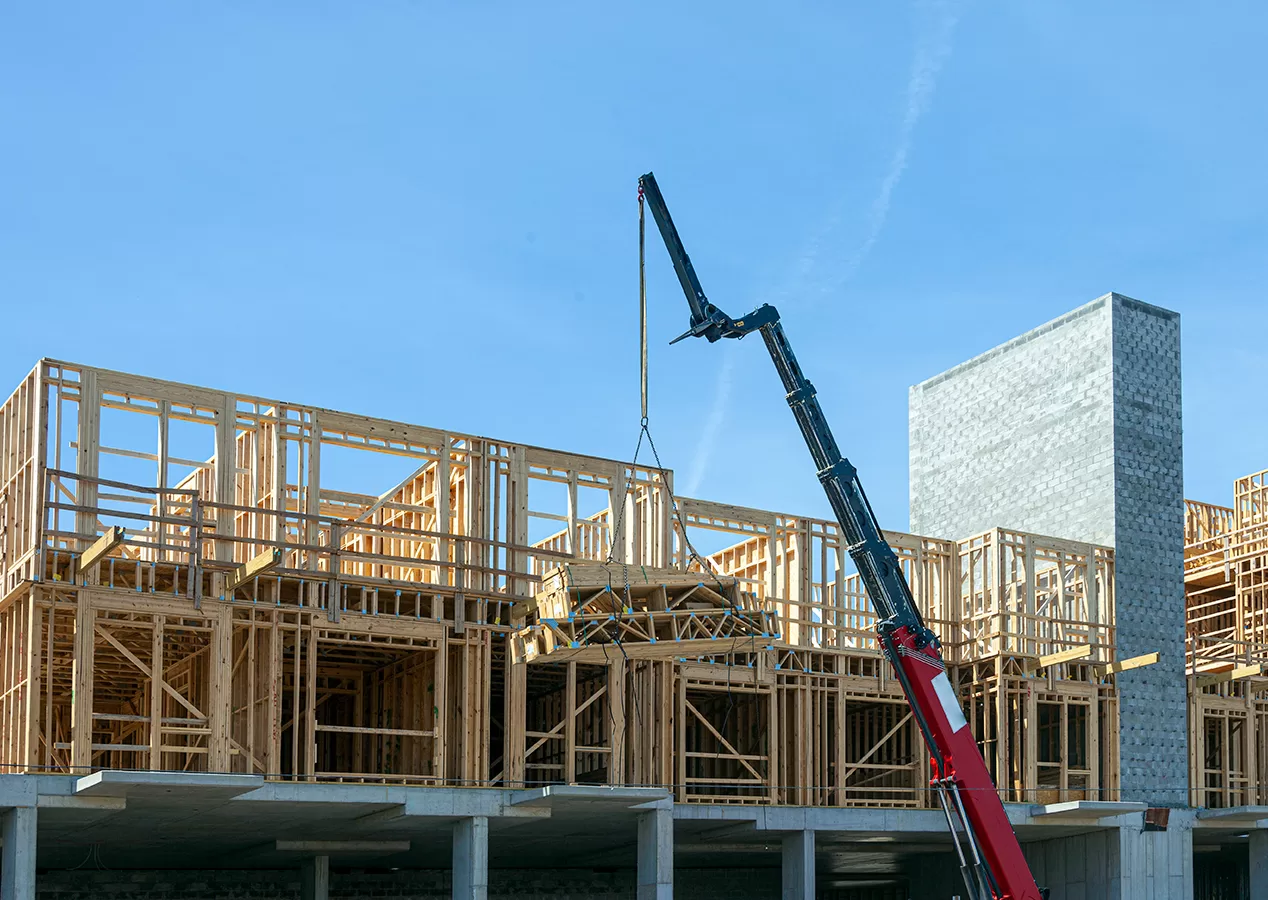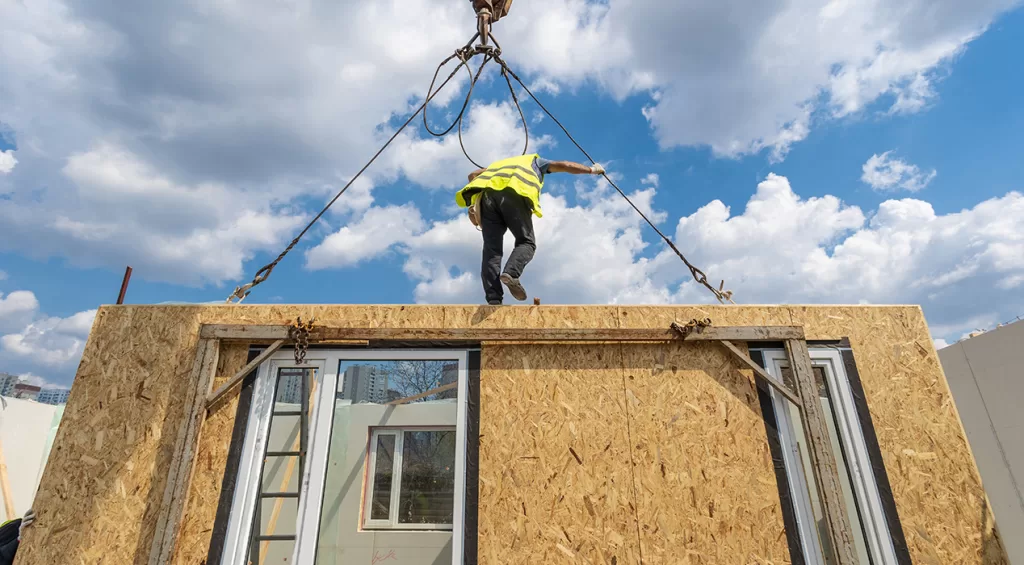



Last year was a tough one for many industries, including construction. Record-breaking inflation and interest rate hikes, as well as ongoing labor shortages, supply chain issues and a volatile global economy challenged the industry. These obstacles can be confronted as threats, but a more productive approach is to see them as transformative opportunities.
There are many reasons to be optimistic, among them advances in technology, progress in eco-friendly practices and growth in sectors such as modular and prefabrication construction.
In the U.S., the residential and nonresidential sectors are expected to continue advancing, with commercial construction estimated to grow at a CAGR of 1.62% between 2022 and 2027 to a market size of $107.69 billion. Most of this growth will be driven by an increase in construction of green buildings, manufacturing plants and distribution facilities, as well as a booming real estate sector.
Sources: Statista, Research and Markets, Technavio, Deloitte
Staying abreast of construction trends helps decision-makers develop successful business strategies and respond to changes effectively in order to minimize disruptions and enhance their competitiveness.
The construction industry is facing a complex interplay of factors affecting its workforce. According to Associated Builders and Contractors, both structural and cyclical elements are influencing the balance between worker supply and demand.
Structural challenges include high retirement rates, large-scale projects across various sectors, and societal attitudes discouraging youth from pursuing skilled trades. Cyclical factors, such as interest rates and economic conditions, have recently narrowed the gap between worker availability and need, particularly impacting residential construction.
Looking ahead, anticipated interest rate reductions in 2024 and 2025 are expected to maintain significant worker shortages. This could delay infrastructure improvements and domestic supply chain development, potentially increasing construction costs and affecting both businesses and taxpayers.
Furthermore, the industry faces an ongoing demographic shift, with over 20% of workers aged 55 or older. The impending retirement of these experienced professionals poses a significant concern for the sector’s future workforce composition and expertise.
Based on historical Census Bureau Job-to-Job Flows data, an estimated 1.9 million construction workers will leave their jobs to work in other industries in 2024; this should be offset by an anticipated 2.1 million workers who will leave other industries to work in construction.
As consumers become more sustainability conscious and place greater pressure on the industry to reduce its carbon footprint, project owners, designers and builders will continue to adopt eco-friendly practices in order to deliver projects that have a more positive impact on the environment and society.
These practices typically involve using sustainable construction materials and methods that reduce waste and toxins, incorporating solar panels in new projects and other renewable energy elements, recycling, and repurposing construction materials.


A digital overhaul is one of the most significant trends taking place in the construction industry. Companies are increasing their investment in and reliance on technology such as project management software, supply chain technology, fuel and fleet optimization, connectivity, uptime or output contracts, equipment tracking software and others. Technology is helping the industry improve speed, predictability, innovation, collaboration, safety and profitability.
Data Driven
Digital technology allows companies to collect, analyze and use data to better plan their projects and make smarter decisions based on real-time information. Data is being used in every stage of the construction process to create more accurate timeline and budget estimates and improve processes, which help prevent cost overruns and delays.
Right now, too much of this data is being stored in multiple disparate systems, making it less useful than it could be. Expect to see more companies using artificial intelligence (AI) and cloud-based platforms to automate their data to consolidate and standardize it in order to derive actionable insights that will be crucial to the success of projects, companies and the whole industry.
In recent years, virtual and augmented reality (VR/AR) technologies have emerged as game-changing tools in the construction industry. These innovations allow professionals to conduct virtual walkthroughs and provide detailed project visualizations, enhancing communication with clients and stakeholders.
According to Statista, the AR & VR market is projected to generate revenue of $40.4bn in 2024. This market is expected to grow at an annual rate of 8.97% (CAGR 2024-2029), resulting in a projected market volume of $62.0bn by 2029.
For constructors, the integration of AR into construction planning has shown remarkable benefits, including a 90% reduction in errors and a 30% increase in efficiency. This technology offers advantages such as enhanced project staging, 3D visualization, automated measuring, and safety training simulations. Furthermore, AR supports remote worksites and mobile access, making it an invaluable asset in modern construction practices.
In parallel, 3D printing is rapidly gaining traction in the construction sector. With a projected CAGR of 65.25% from 2023 to 2032, this technology is set to revolutionize building processes. 3D printing, or additive construction, offers benefits such as reduced waste, faster turnaround times, and the ability to create custom designs efficiently.
Automation offers significant advantages in the design and construction of structures, including greater speed, accuracy, productivity tracking, risk mitigation and safety. Artificial Intelligence (AI) In Construction Market is projected to reach USD 13,247.7 Million by 2030, growing at a CAGR of 36% from 2023 to 2030.according to a report by Verified Market Research.
Robotics, 3D printing and IoT are expected to be game-changers in the industry. 3D printing will reduce construction time, increase safety and promote sustainability. Robotics and IoT will assist companies with manual tasks (such as bricklaying) and enable them to monitor productivity in real-time and use that information to manage project schedules, budgets and processes more efficiently, saving time and money.
An increased focus on sustainability will create more opportunities for modular and prefabricated construction. These methods reduce the environmental impact of construction and allow companies to better scope, plan and coordinate their projects prior to the start of construction, as well as reduce waste and improve productivity, accuracy, speed and safety.
As the industry continues to evolve, staying informed about trends and changes is smart business. Are you ready to talk about your project? Our team can handle any question you have and show you all the options available to you.
CIC Construction Group has more than 40 years of experience and expertise that consistently exceeds our clients’ expectations. We offer comprehensive general contracting services for commercial customers in the Caribbean and Southeast U.S Contact us.